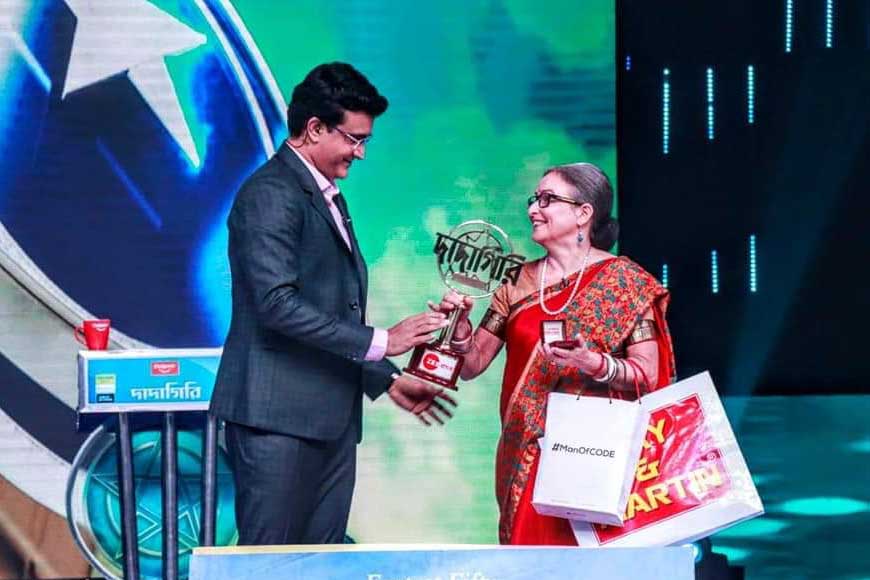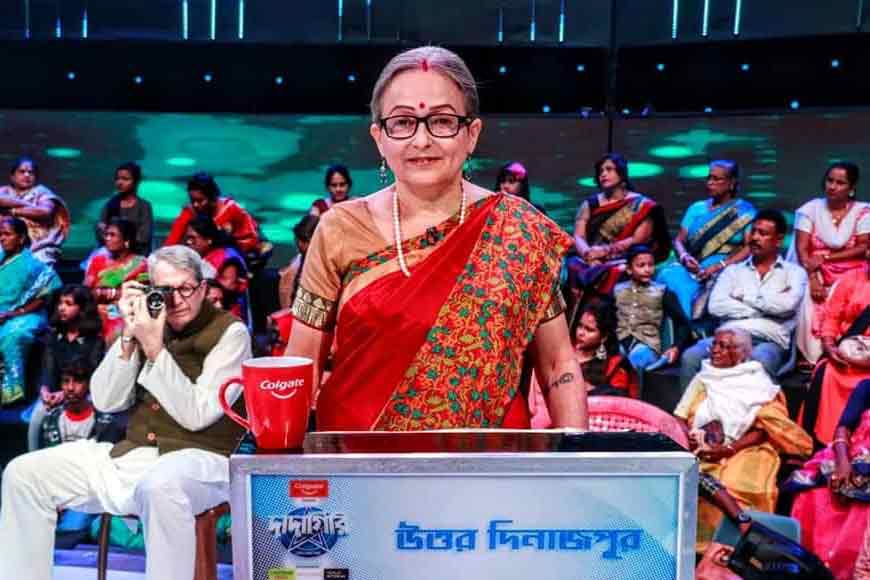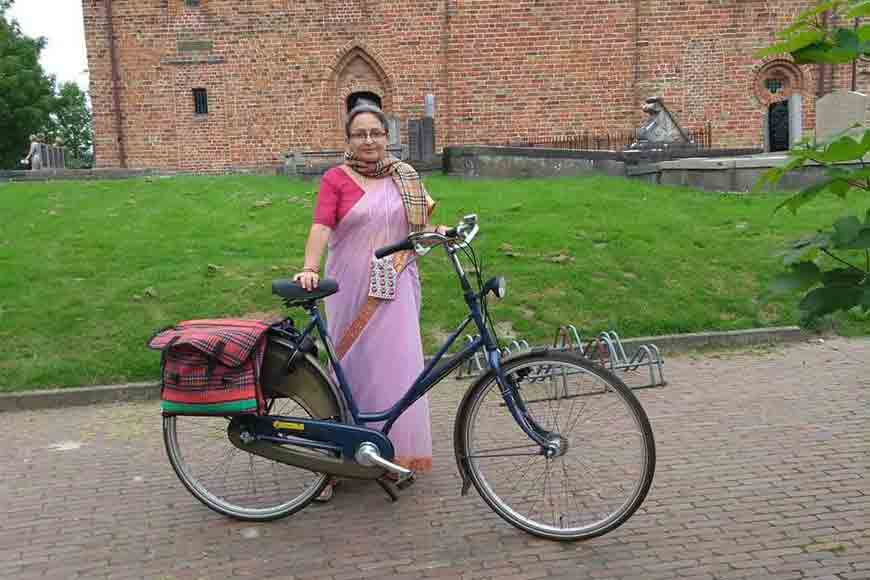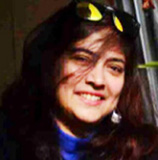Dadagiri Champ European bou of Chandernagar – Exclusive on Neline Mondal

She looks like a European, speaks like a Bengali in a perfect saree clad demeanour. Saheli Mitra speaks to Neline Mondal, the DADAGIRI CHAMPION, who is relentlessly trying to restore heritage of this erstwhile French colony
• How was it like winning the Dadagiri Champs?
I have stopped watching TV one year ago. But it was sweet of them to have invited me to the popular TV show and yes, I could answer many questions. It was fun
• What drew you to Bengal from distant Europe?
I came to Chandernagore to be a part of a restoration project work that my future husband made possible. I was told I need to go to meet someone called Ujjwal Mondal, who had obtained on behalf of the French President, funds for the restoration project, which he brought to India through Ministry of Defence. He was working on the restoration of the institute at the Strand. That’s how I met my future husband, Ujjwal.
The year was 1988 when I was asked to go meet Ujjal Mondal by the Bharat Sevak Samaaj headquarters in Delhi and from UNESCO CCIVS, based in Paris. The Institut de Chandernagore, on the Strand, has been restored under INTACH, thanks to the funds obtained.

• Why did you stay back?
Well, here is actually where I met my future husband, Ujjwal. I became part of their project work on heritage. If you believe in incarnation, I must say I felt later that I belonged to this place. He also understood in the beginning how I felt. And there was my other love, heritage. I also come from a well-known family, just like Ujjwal does and we bonded over our shared love for heritage and tradition. I consider my staying back was my fate, literally my karma. I didn’t finish my post-graduation after I was supposed to return for my work to Europe. As after I met my husband, I decided to stay back. But both of us regretted the fact that I did not finish my post- graduation. I changed my life course from being a scientist to a heritage specialist. And I do not regret that at all, life comes as is.
• You are married to a well-known aristocratic family of Chandernagore. A brief on their family history
Well my husband’s family once upon a time had an import-export trade, using their own ships. They were one of the trendy and rich families in India during those days. Even now we have Ganesh Janani Puja at our para, which was theirs. Families trading using ships did this puja. They had fifteen ships in all that used to come to the Kachari ghat. One of their ships even won against Portuguese pirates and the Mondals made an agreement with the pirates that any ship bearing the flag of their family will never be attacked! They thus started an escort business for other ships, that fetched them huge income.
• What projects are you involved with right now?
I am involved with a large number of projects. Presently one being with UK the Hooghly Heritage River Project, which is definitely about the history of Bengal. Antara Mukherjee and I lead the investigations about the culture and old houses and old families along the Hooghly. Our documentation includes temples, houses and people. This is an area hardly explored in details or even documented properly.
Permanently, as a member of USA Historical Society, I co-op the group to do regular events. It’s all about inter-connective history and culture between America and India. I have also done such projects with the French Government, and I led on the ground Aishwaria Tipnis’ census of buildings of Chandernagore. And then socio-economic projects, Bharat Sevak Samaaj and so on.
• Can Chandernagore be brought on the global map?
Oh yes, definitely. I have been promoting tourism for years and it is going very well. I am thinking of bringing Chandernagore on the global map partially through tourism and through educational activities like exchange programmes. Chandernagore used to be an enormous power in the 18th century and also famous for its Jagaddhatri Puja. This can connect this place to the global community. An online competition organized annually with a dedicated group has much publicised the puja abroad.
• What problems did you face initially in coping with Bengali culture and food after marriage?
Well, the problem was more climatic. The food was a problem, specially spices. My in-laws strictly cook Bengali food, none else. But I gladly adapted to the local cuisine. However, when I married, women had several restrictions in going out to work etc, specially a traditional and old household has its own rules. I adapted to it.

• Who are your family members now?
Well my mother-in-law and father-in-law both died. With my husband, I now live in our unit of this house. My son lives in Mumbai. During Puja many members of the extended family come down.
• When you first came to the Mondal household, how was it like?
In old time, it was surrounded by jungle and was quite dangerous. Still many animals lived there when I came. But not like the cemetery, where I had a snake stick with me always during the census of the buried, which I did alone. There was also the menace of beehives and wild stray dogs.
• How do you look at restoration work in your locality?
Plenty of places in our locality need restoration. But getting funds for that is a big issue. I have for years fought for the restoration of the registry building. Such projects cannot be just crowd funded as is being tried for the registry building. Basic needs which should be looked into, including drainage and other issues, attract more attention.
• Describe your love for Bengal in 3 sentences
Bengalis are similar to the French in many ways, particularly in richness of fine culture. Community feeling and people’s warmth do matter a lot. Arts are practiced in Bengal with so much enthusiasm as is in France.








